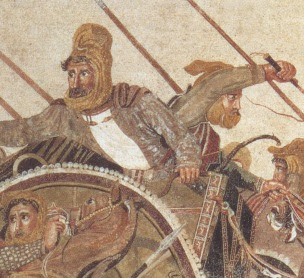The Silk Road is an interconnected series of routes through Southern Asia connecting Chang'an (today's Xi'an), China, with Antioch, Asia Minor, as well as other points. It extends over 5,000 miles.
Exchanges of goods, services, and culture were significant not only for the development of the great civilizations of China, ancient Egypt, Mesopotamia, Persia, India and Rome but also helped to lay the foundations of the modern world.
The continental Silk Road diverges into northern and southern routes as it extends from the commercial centers of North China, the northern route passing through the Bulgar–Kypchak zone to Eastern Europe and the Crimean peninsula, and from there across the Black Sea, Marmara Sea and the Balkans to Venice; the southern route passing through Turkestan–Khorasan into Mesopotamia and Anatolia, and then through Antioch in Southern Anatolia into the Mediterranean Sea or through the Levant into Egypt and North Africa.
This region was taken over by Alexander the Great, who finally conquered the Iranian empire, and colonized the area. The first major step in opening the Silk Road between the East and the West came with the expansion of Alexander the Great deep into Central Asia, as far as Ferghana at the borders of the modern-day Xinjiang region of China, where he founded in 329 BC a Greek settlement in the city of Alexandria Eschate "Alexandria The Farthest", Khujand (also called Khozdent or Khojent), in the state of Tajikistan.
Although he only ruled the area until 325 B.C., the effect of the Greek invasion was quite considerable. The Greek language was brought to the area, and Greek mythology was introduced. The aesthetics of Greek sculpture were merged with the ideas developed from the Indian kingdoms, and a separate local school of art emerged. By the third century B.C., the area had already become a crossroads of Asia, where Persian, Indian and Greek ideas met. It is believed that the residents of the Hunza valley in the Karakorum are the direct descendents of the army of Alexander.
This crossroads region, covering the area to the south of the Hindu Kush and Karakorum ranges, now Pakistan and Afghanistan, was overrun by a number of different peoples. After the Greeks, the tribes from Palmyra, in Syria, and then Parthia, to the east of the Mediterranean, took over the region. These peoples were less sophisticated than the Greeks, and adopted the Greek language and coin system in this region, introducing their own influences in the fields of sculpture and art.







